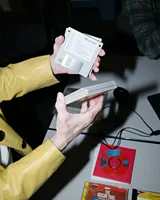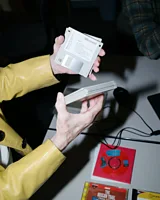The Unyielding Grip of Outdated Technology
As technology advances, some individuals remain stuck with decades-old software and devices. A recent visit to a doctor’s office in New York City revealed an elevator displaying an error message from Windows XP, an operating system nearly a quarter century old. This encounter highlights the pervasive presence of obsolete technology in our daily lives.

Microsoft, celebrating its 50th anniversary, has become a dominant force in the tech industry. Despite its current focus on AI, the company’s legacy continues to influence various aspects of society. Many critical systems, including ATMs and railway infrastructure, still rely on outdated Windows operating systems.
“Windows is the ultimate infrastructure,” notes Lee Vinsel, an associate professor at Virginia Tech. “Their systems are built into everything around us.”
Legacy Systems in Everyday Life
Many ATMs operate on legacy Windows systems, including Windows XP and Windows NT. Elvis Montiero, an ATM field technician, explains that upgrading these machines is challenging due to high costs and compatibility issues. Similarly, Deutsche Bahn, Germany’s railway service, uses Windows 3.11 for display systems on some trains.

In San Francisco, the Muni Metro light railway still uses floppy disks to load DOS software for their Automatic Train Control System. John Watts, who handles high-end printing for fine art photographers, relies on Windows 2000 to operate his LightJet printers.
“I can’t stand Windows machines, but I’m stuck with them,” Watts admits.
Challenges and Consequences
Using outdated technology can be frustrating. Psychiatrist Eric Zabriskie spent four years waiting for his computer to boot up at the US Department of Veterans Affairs. The Computerized Patient Record System (CPRS), launched in 1997, runs on top of VistA, a system that debuted in 1985.
“CPRS works, but it’s an overwhelmingly frustrating experience,” Zabriskie says.
Preserving Digital Art
Not all old computers are a burden. Dene Grigar, director of the Electronic Literature Lab, preserves vintage computers to showcase digital art. She maintains 61 computers to keep early digital works alive.
“As soon as people got their hands on computers, they started making art,” Grigar notes.

The Future of Legacy Systems
Microsoft’s approach to supporting old software has contributed to the persistence of legacy systems. M Scott Ford, a software developer, suggests that organizations often prioritize new features over maintaining existing infrastructure.
As technology continues to evolve, the challenge of managing legacy systems will persist. While some find value in preserving old technology, others face the daunting task of upgrading or replacing outdated systems.


